#Myriad (typeface)
Explore tagged Tumblr posts
Text
Font, Display Font, Groovy font, Fancy Font,

font, free fonts, font style, dafonts, fontgenerator, helvetica, whatthefont, graffiti font, calligraphy fonts, cool fonts, font online, find font, cursive fonts, tattoo fonts, letter fonts, handwritten fonts, font aesthetic, find font from image, helvetica font, gothic font, font text, fancy fonts, fancy text, cute fonts, bold fonts, montserrat font, font styles names, stylish text, calligraphy lettering, text style,
Read more here ==>> font style
poppins font, times new roman, bembo, tattoo font styles, font meme, meme font, what de font, font id, bubble lettering, bold text, bold text font, comic sans, comic sans ms, cool text symbols, cool texts, discord font, fancy font style, font poppins, fonts for discord, avenir, gotham font, logo fonts, gilroy font, retro fonts, font creator, modern fonts, vintage fonts, free fonts for commercial use, univers font, custom fonts, font design, script fonts, neon font, helvetica neue, best fonts for websites, wedding fonts, the seasons font, 3d fonts, best fonts for logos, typography design, groovy font, different fonts, frutiger font, best fonts, bubble font, lettering styles, stencil font, christmas fonts, western fonts, luxury fonts, baskerville, lucida, serif fonts, sports fonts, art deco fonts, 70s fonts, typewriter font, font cloud, proxima nova font, nexa font, elegant fonts, avenir font, futuristic fonts, signature font, baseball font, halloween fonts, fancy letters, fun fonts, typography fonts, futura font, proxima nova, varsity font, frutiger, font types, neue haas grotesk, sans serif font, script letters, sans serif, new fonts, professional fonts, 80s fonts, downloadable fonts, fire font, blackletter font, y2k fonts, bubble letter font, 90s fonts, writing fonts, different font styles, number fonts, fonts art, death metal font, gothic letters, optima font, comic book font, times new roman font, fancy writing, fonts style designs, brush font, rounded fonts, star wars font, word fonts, arial font, drip font, display fonts, collegiate font, barcode font, metal font, typeface, bauhaus font, beautiful fonts, grunge fonts, comic font, chalk font, helvetica neue font, block letter font, garamond font, art nouveau font, minimalist fonts, medieval font, free fonts online, cyberpunk font, nice fonts, akzidenz grotesk, tattoo lettering fonts, chalkboard font, stamp font, pretty fonts, heavy metal font, tattoo script font, baskerville font, special fonts, eurostile font, balloon font, metropolis font, different letter fonts, classic fonts, spooky fonts, font styles free, harry potter font, block font, cooper black font, alphabet fonts, rockwell font, punk fonts, pirate font, calibri font, font names, bodoni font, cinematic fonts, tech fonts, water font, friends font, outline font, roman font, brush script font, italic font, calligraphr, copperplate font, gaming fonts, didot font, font style online, different types of fonts, canva fonts, merry christmas font, chicano font, lobster font, century gothic font, glacial indifference font, digital font, garamond, font from image, vogue font, newspaper font, text aesthetic, bookman font, bluey font, cool letters, movie fonts, floral font, akira expanded font, royal fonts, cool text fonts, horror fonts, lettering tattoo, toy story font, trajan pro font, fantasy fonts, great vibes font, myriad pro font, georgia font, square font, roboto, big font, rubber stamp font, tattoo fonts cursive, video game font, lemon milk font, circular font, playfair display font, gangster font, algerian font, flower font, verdana font, spiderman font, gill sans font, best tattoo fonts, impact font, scary fonts, jersey font, pixel font, san francisco font, roboto font, simple fonts, poster fonts, font family, palatino font, super mario font, myriad pro,
3 notes
·
View notes
Text

Fleckled Offers 150+ Hand-Printed Letterpress Fonts for Digital Download via Colossal [Shared]
As AI infiltrates every part of the creative process, those committed to human expression have found innovative ways to make craft and artistry endlessly appealing. Creative director Jason Pattinson is one such person. He’s behind Fleckled, a new online shop of hand-printed letterpress typefaces that have been digitized and are available as high-resolution downloads.
Currently, Fleckled contains more than 150 fonts printed on an 1860s-era Columbian press, with more on the way. All are available in either uppercase, lowercase, or numeral sets with additional ornaments and borders across myriad styles. Retaining the signature graininess and warmth of the wood, each also comes in two versions: one with a thicker, more saturated ink and another with a lighter, more distressed feel.
0 notes
Text
‘Anthropocene; Typographers'
Typotheque
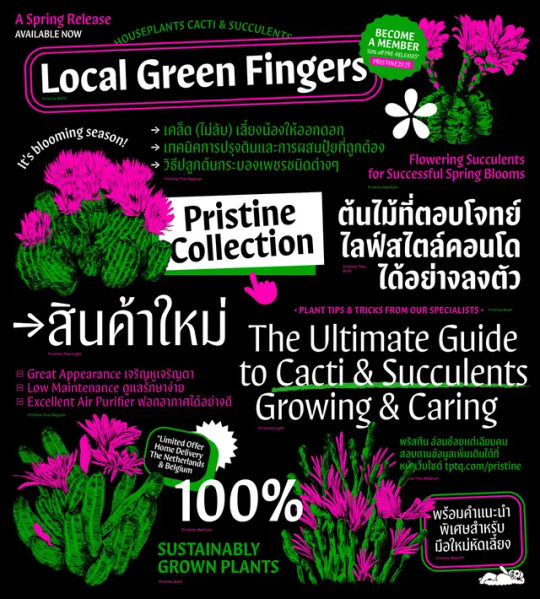
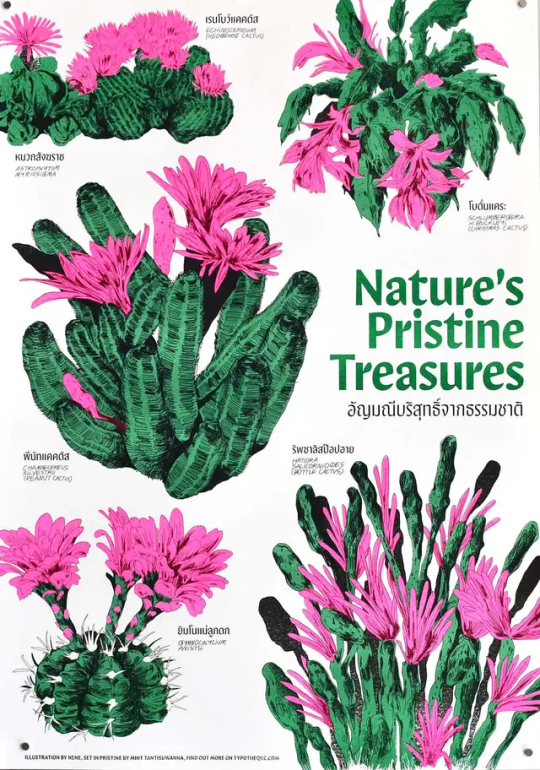
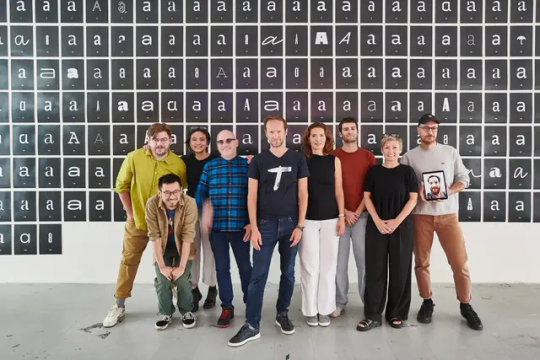
Based in the Netherlands, Typotheque is a type design company, and creates fonts for a myriad of languages beyond just english, such as can be seen in the examples above, with their 'Pristine' typeface, which I feel has a graceful sense to it's form, given the curves present softly to the eye, and convey a circular sense when it comes to shape language.
Plantlife, as can be seen in the images, was also taken as inspiration when developing the typeface, as is mentioned in the blog on the typeface with the provided imagery labelled as the 'conceptual essence' of the type.
This leads me to cite this typeface, and by extension, type foundry, as a fantastic source to apply to my own work, given the plant-inspired feel would contrast well, not only with anthropocene in general, but my desertification theming, given desertification is the loss of plantlife and growth of deserts into different habitats. This could help convey those themes in a more subtle manner through text.
Tom Collins



Tom Collins is a Limerick-based sign painter, with his work displaying the names of many businesses in the local area. With the images displayed above, I wanted to examine how Collins manages to draw the eye to his painted text.
I believe he achieves this through the colour usage and complimentation as is seen such as with the yellow-gold on purple, the gradient use within the text itself which generates a sense of flow and balance as visual interest to bring the eye to it, and the decoration and flare around the text, which adds to that sense of balance, and contributes to the shape language, as many of the shown signs incorporate friendly and stable shapes with circles, ovals and rectangles.
I feel the gradient in particular may be interesting to bring into the scope of my own work, as I want to contrast the text away from overpowering my polar bear element, but still retaining it as the second point of the image the eye is inclined to settle on. I also want tot try play with the colour contrast, by producing a series of thumbnails with varied colour, informed by colour theory as per the exercises with Meave.
Alex Trochut
With Alex Trochut's work, I found myself very intrigued by his 'Snowfall' typography, as I felt it would be an incredibly valuable reference for the utility of and hw to achieve the iterative design process.


The type of typography on display would also be incredibly relevant with it's grunginess of the anthropocene, given the idea of human influence, which whilst it can be positive, is usually negative and harmful, and thus the splattered, sketch-y typography effect could be something to look into to achieve that sense.
0 notes
Text
Research: Typography
Typography is the art of arranging letters and text in a way that makes the copy legible, clear, and visually appealing to the reader.
It involves font style, appearance, and structure, which aims to elicit certain emotions and convey specific messages. In short, typography is what brings the text to life.
Typography has a profound effect on the way that users digest and perceive the information conveyed by the text.
Eye-catching type is much more persuasive than weak fonts that don’t reinforce the message of the text.
History of Typography
Typography can be dated back to the 11th century, during the innovation of movable type. Before the digital age, typography was a specialized craft associated with books magazines, and eventually public works.
The first example of typography can be seen in the Gutenberg Bible, which kick-started a typography revolution in the west.
Elements of Typography
Fonts and Typeface
There’s some confusion surrounding the difference between typefaces and fonts, with many treating the two as synonymous.
A typeface is a design style that comprises a myriad of characters of varying sizes and weight, whereas a font is a graphical representation of a text character.
Put simply, a typeface is a family of related fonts, while fonts refer to the weights, widths, and styles that constitute a typeface.
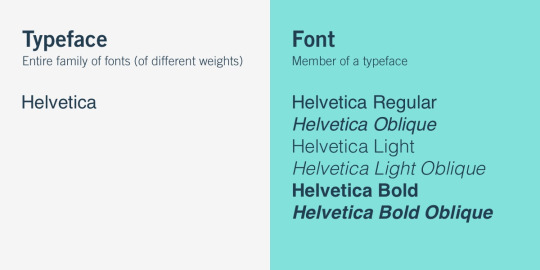
There are three basic kinds of typeface: serif, sans-serif, and decorative.
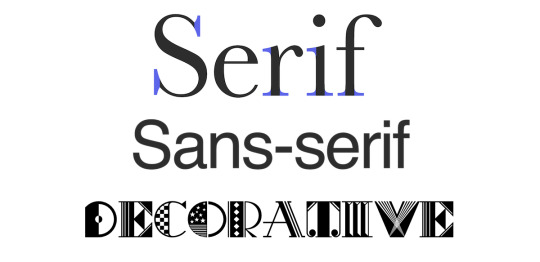
Serif
As the visual example above demonstrates, serif typefaces are identified by the extra marks at the end of letters.
The addition of these small strokes and elements gives serif fonts an air of tradition, history, authority, and integrity.
It’s no surprise, then, that you’ll see this “classic” style used for newspaper titles, for example, or for the font used in books.
Sans-serif
Just like the name suggests, sans-serif typefaces are defined by what they lack.
Without the serif’s more traditional strokes and dashes, the sans-serif font family is seen as much more modern and bold. As a result, it’s clear to read and, when used in headlines, grabs your attention more than serifs.
Decorative
Again, given away by its name, the function of this typeface is aesthetic more than readable. As a result, you’re far more likely to see these used in brand names, logos, and short titles.
Decorative typefaces are excellent for allowing the user to show off even more personality, feeling, and uniqueness with their font choice.
Contrast
Much like hierarchy, contrast helps to convey which ideas or messages you want to emphasize to your readers.
Spending some time on contrast makes your text interesting, meaningful, and attention-grabbing. Most designers create contrast by playing around with varying typefaces, colors, styles, and sizes to create impact and break up the page.
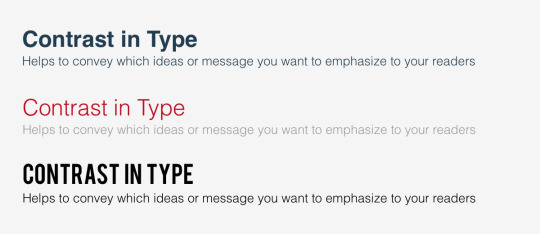
Consistency
Keeping your typefaces consistent is key to avoid being confusing and messy.
When conveying information, it’s essential to stick to the same font style so your readers instantly understand what they’re reading and begin to notice a pattern.
While it’s okay to play around with levels of hierarchy to some extent, it’s good practice to establish a consistent hierarchy of typefaces (one consistent font for headers, another for subheadings) and stick to it.
White space
Often referred to as “negative space,” white space is the space around text or graphics.
It’s often overlooked and tends to go unnoticed by the user, but proper use of white space ensures the interface is uncluttered and the text is readable.
White space can even draw attention to the text and provide an aesthetically pleasing experience. White space often takes the form of margins, padding, or just areas with no text or graphics.
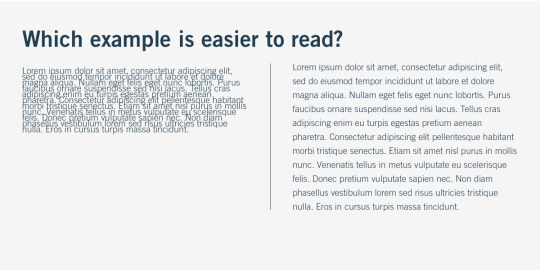
Alignment
Alignment is the process of unifying and composing text, graphics, and images to ensure equal space, size, and distance between each element.
Colour
Color has three key components: value, hue, and saturation.
A good designer will know how to balance these three components to make the text both eye-catching and clearly legible, even for those with visual impairments. Often, designers will test this by viewing the text in greyscale (without color) and making tweaks if the text is too dark or too light against the background color.
Hierarchy
Establishing a hierarchy is one of the most vital principles of typography.
Typographical hierarchy aims to distinguish between prominent pieces of copy that should be noticed and read first and standard text copy.
In an age of short attention spans brought about by social media, designers are urged to be concise and create typefaces that allow users to consume the necessary information in short amounts of time.
Hierarchy can be created using sizing, color, contrast, and alignment. The most typical example of a typographical hierarchy is size: headings should always be larger than subheadings and standard text.

Kerning and Leading
They influence the readability of the text. When you optimize the space between letters and lines, you ensure the text doesn't appear too crowded or too sparse.

Font Weight, Height, and Size
These aspects of typography contribute to uniformity in the text. When you make them consistent across your piece, you maintain your brand’s identity and enhance readability.
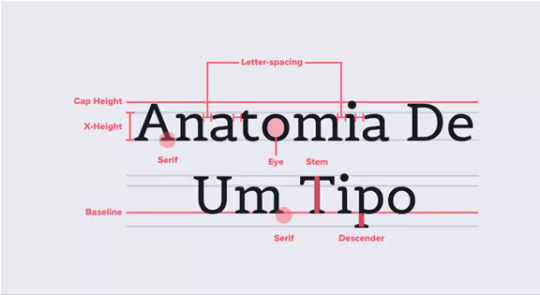
Baseline
This is the invisible line upon which all letters rest. You can create a grid using the baseline of your chosen type to create a harmonious layout. Learn more about grid systems here.
x-height
This is the distance between the baseline and the height of the lowercase letter “x”. If you’re working with a font that has an unusually large (or small) x-height, it could affect the entire interface—sometimes even breaking the layout.
Stroke
This is a straight or curved line that creates the principal part of a letter.
Ascender and descender
The vertical stroke that extends upward beyond the x-height and downward beyond the baseline, respectively.
Sources
Hannah, J. (2023) Typography: What is it? The Complete Guide for 2025, CareerFoundry. Available at: https://careerfoundry.com/en/blog/ui-design/beginners-guide-to-typography/#:~:text=Typography%20is%20the%20art%20of,emotions%20and%20convey%20specific%20messages. (Accessed: 07 March 2025).
What is typography? (2024) The Interaction Design Foundation. Available at: https://www.interaction-design.org/literature/topics/typography#how_important_is_typography_in_ux_design_and_product_design?-1 (Accessed: 07 March 2025).
0 notes
Text

Cup Of Coffee
For this black and white font sculpture, I chose the letter “C” from the Myriad Pro typeface because it resonates with both “coffee” and “cup,” which are central to the design. The idea of using the letter “C” came from a personal aspiration. That one day I hoped to open a coffee shop, and I began to think about what my logo might look like. This exercise helped me explore potential branding concepts for that future venture.
Through the use of Adobe Illustrator, I modified the letter "C" into a visual representation of stacked coffee cups. The process began by manipulating the basic shape of the letter with the Direct Selection and Warp tools, which allowed me to curve and stretch the letter into a more recognizable coffee cup silhouette. I used repetition to create the stacked effect while applying transparency and shadow effects to introduce depth and realism. The black-and-white color scheme emphasizes the design's clean lines, creating a sharp contrast between the coffee cups and the background.
Shape, size, and repetition played a key role in this composition. By repeating the letter “C” in different orientations, I created a pattern that resembles both cups and their circular saucers, drawing the viewer's attention. As a result of the simplicity of the color palette, the cups' form remains the focal point instead of being distracted by color.
This work represents my creative process and my personal aspirations, as it symbolizes my journey toward creating a brand identity for my future coffee shop.
0 notes
Text
Key Factors to Consider for an Effective Business Card Design
1.Which paper is used for business cards?
When selecting paper for business cards, it is essential to consider both quality and durability to create a lasting impression on clients and colleagues alike. The most commonly used papers are various types of cardstocks, with weights typically ranging from 14 to 110 lb cover stock. Among these options, a thickness of 16 pt (approximately 0.016 inches) is often favored for its sturdiness, providing a tactile experience that conveys professionalism and attention to detail. A thicker card not only feels more substantial in hand but also stands up better to the wear and tear of daily use, ensuring that your card remains pristine as it circulates among potential clients. Additionally, the choice of finish—whether matte, glossy, or uncoated—can significantly enhance the card's aesthetic appeal and tactile experience. A matte finish can lend an air of sophistication, while a glossy finish may offer vibrant colors that catch the eye, making the card visually striking. For businesses that prioritize sustainability, eco-friendly options such as recycled cardstock present a viable alternative, allowing companies to communicate their commitment to environmental responsibility without compromising on quality. These sustainable materials are available in various weights and finishes, ensuring that brands can still achieve the desired look and feel while reducing their ecological footprint. Ultimately, the selected paper should not only fulfill practical requirements but also reflect the brand's identity and professionalism. A thoughtfully chosen business card serves as an extension of the brand, encapsulating its values and mission in a tangible form. Therefore, it is crucial to invest time and consideration into the selection process, ensuring that the final product aligns with the overall branding strategy and leaves a memorable impression on all who receive it.
2. What is the most attractive business font?
Choosing the most attractive business font is a critical decision that significantly impacts effective communication and the overall brand identity. Among the myriad of font options available, Helvetica has emerged as a standout choice due to its clean lines, geometric shapes, and remarkable versatility. This sans-serif typeface exudes an air of professionalism and clarity, making it suitable for a wide range of applications in both print and digital mediums. Its inherent neutrality allows Helvetica to adapt seamlessly across various industries—from technology to finance—enhancing readability while maintaining a modern and sophisticated aesthetic. This adaptability is particularly advantageous in a business landscape that increasingly values clarity and direct communication, making Helvetica a timeless choice for brands looking to convey confidence and reliability. While Helvetica remains a popular option, other notable contenders deserve consideration for their unique characteristics and stylistic appeal. For instance, Garamond brings a touch of classic elegance with its serif design, which can evoke a sense of tradition and refinement. This makes it an excellent choice for brands in the publishing, education, or luxury sectors, where a more sophisticated image is desired. On the other hand, Proxima Nova offers a contemporary flair with its geometric forms and balanced proportions, making it an ideal choice for brands that want to project a modern and approachable image. Ultimately, the choice of font should be a strategic decision that aligns with the brand's core values and resonates with its target audience. By carefully selecting a typeface that reflects the brand's identity and aspirations, businesses can ensure that their communications not only capture attention but also leave a lasting impression, projecting a polished and cohesive image to the world.
3. How to cut business card?
Cutting business cards with precision is crucial for creating a polished and professional presentation that effectively represents your brand. The quality of your business card speaks volumes about your business, and using high-quality cardstock is the first step in ensuring that your cards make a lasting impression. It is essential to select a cardstock that aligns with your brand’s identity, whether that be a glossy finish for a modern look or a textured feel for a more traditional approach. Once you have your cardstock, employing a paper trimmer is advisable for achieving straight edges and consistent cuts. Before beginning the cutting process, measure and mark the desired dimensions on the cardstock—typically 3.5 inches by 2 inches for standard business cards—to ensure accuracy and uniformity across all your cards. When using a paper trimmer, align the cardstock carefully and apply firm, even pressure to achieve clean cuts without tearing or fraying the edges. If you opt for scissors instead, utilizing a ruler as a guide can significantly enhance the precision of your cuts. Take your time while cutting to maintain control and prevent any mistakes. After cutting, it is crucial to inspect each card for any rough edges or imperfections. To refine the finish, consider using fine-grit sandpaper to smooth out any jagged edges or a corner rounder to give your cards a polished look. This attention to detail not only elevates the overall appearance of your business cards but also reinforces your commitment to quality and professionalism in all aspects of your business.
4. What comes first on a business card?
When designing a business card, the strategic placement of information is paramount to achieving effective communication and making a lasting impression. The individual’s name typically occupies the most prominent position, as it is crucial for establishing identity and fostering personal connections. Following the name, the job title is usually included to provide context regarding the individual’s role and areas of expertise, allowing recipients to quickly understand the professional background of the cardholder. This hierarchy of information helps to convey a clear message about who the individual is and what they represent, setting the stage for meaningful interactions.
In addition to the name and title, the company name should be prominently displayed, as it plays a vital role in reinforcing brand recognition and enhancing credibility. A well-structured business card also includes essential contact details such as a phone number, email address, and website, all of which should be clearly legible to facilitate easy follow-up and further engagement. By ensuring that this critical information is organized in a visually appealing manner, a professional business card not only reflects the individual’s professionalism but also significantly enhances networking opportunities. When recipients can effortlessly access vital details, they are more likely to reach out, paving the way for fruitful professional relationships and collaborations.
5. Why is a business card?
A business card serves as a vital networking tool in professional settings, encapsulating essential information about an individual or organization in a compact format. Typically, it includes key details such as the individual’s name, title, company affiliation, contact numbers, email addresses, and social media profiles. This concise presentation of information enables seamless communication and connection, making it easier for potential clients, partners, or collaborators to reach out and engage. The physicality of a business card not only conveys a sense of professionalism but also enhances credibility, as it serves as a tangible reminder of the interaction. When exchanged during networking events, meetings, or conferences, a well-designed business card can leave a lasting impression, reinforcing the individual's or organization's brand identity and values. In an increasingly digital world, where electronic communication often overshadows face-to-face interactions, a business card distinguishes one from the competition. While social media and online platforms are valuable for networking, they can sometimes feel impersonal. A physical card fosters a more personal connection, allowing individuals to build rapport and trust in a way that digital mediums may not fully capture. Moreover, a thoughtfully designed business card can serve as a conversation starter, sparking discussions about services, products, or ideas. This fosters opportunities for engagement and facilitates relationship-building, which is essential in today’s interconnected business landscape. Ultimately, a business card is not merely a tool for sharing contact information; it is an indispensable asset for effective personal branding and a strategic investment in one's professional journey.
0 notes
Text
Illuminate Your Brand: Choosing the Right Channel Letter Sign Company
In the bustling world of business, where first impressions are crucial, the signage adorning your storefront can make all the difference. Among the myriad options available, channel letter sign company stand tall as a beacon of professionalism and visibility. These signs not only convey your brand message effectively but also serve as a powerful marketing tool, drawing in potential customers with their sleek design and eye-catching illumination.
What Are Channel Letter Signs?
Channel letter signs are three-dimensional signs constructed from metal or plastic. They are commonly used for exterior signage on storefronts, malls, and office buildings. The letters themselves are typically hollow to allow for the installation of LED lighting, which provides a bright and uniform illumination, ensuring your business name shines brightly day and night.
Why Choose a Specialized Channel Letter Sign Company?
Selecting the right company to design and install your channel letter sign is paramount to achieving a sign that not only meets but exceeds your expectations. Here are some key considerations when choosing a channel letter sign company:
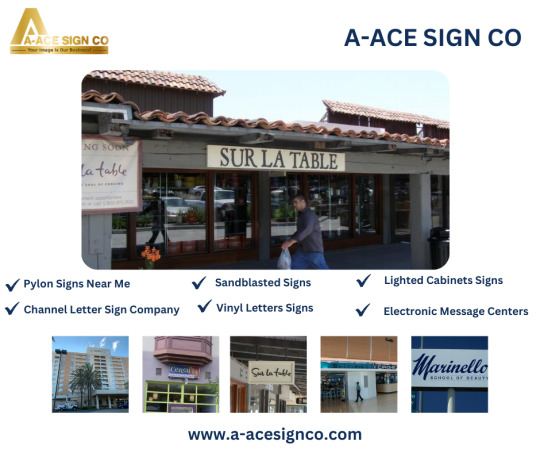
Expertise and Experience: A specialized company brings years of experience in designing and manufacturing channel letter signs. They understand the nuances of materials, lighting options, and installation techniques, ensuring a sign that is not only visually appealing but also durable and functional.
Customization Options: Your business is unique, and your signage should reflect that. A reputable company offers a range of customization options, from choosing the typeface and color scheme to incorporating your logo seamlessly into the design. This customization helps reinforce your brand identity and ensures your sign stands out from the crowd.
Quality Materials and Craftsmanship: Channel letter signs are an investment in your brand's visibility and reputation. A reliable company uses high-quality materials, such as aluminum, acrylic, and energy-efficient LED lighting, to create signs that are built to withstand the elements and maintain their vibrant appearance over time.
Compliance and Permits: Navigating local regulations and obtaining necessary permits can be daunting. A reputable sign company understands local codes and regulations, ensuring your sign complies with all requirements and is installed safely and legally.
Customer Service and Support: From initial consultation to installation and beyond, a dedicated channel letter sign company provides exceptional customer service. They listen to your needs, provide expert guidance, and ensure timely communication throughout the process, delivering a seamless experience from start to finish.
Enhancing Your Business Presence
Investing in a professionally designed and installed channel letter sign is more than just adding a nameplate to your building; it's about making a statement. A well-crafted sign enhances your business's visibility, attracts foot traffic, and leaves a lasting impression on potential customers. Whether you're opening a new location, rebranding, or simply looking to refresh your storefront, a channel letter sign can elevate your business presence and set you apart from the competition.
Conclusion
In today's competitive marketplace, every detail counts when it comes to showcasing your business. A channel letter sign not only serves as a functional identifier but also as a powerful marketing tool that reinforces your brand identity and attracts customers. By choosing a specialized channel letter sign company with expertise, customization options, quality materials, and excellent customer service, you can illuminate your brand and ensure your business stands out in the best possible light. For more details visit our website: www.a-acesignco.com
#Channel Letter Signs#Parking Lot Lighting#Channel Letter Sign Company#Lighted Channel Letter#Neon Signs Near Me#Monument Signs#Vinyl Letters Signs#Dimensional Letters Signs#Typical Architectural Signs#Pylon Signs Near Me#Electronic Message Centers#Vehicle Lettering Signs#Window Awnings Near Me#Lighted Cabinets Signs#Sandblasted Signs#Blade Signs Near Me#Aluminum Signs Near Me#Wood Signs Near Me#Sign Repair & Sign Service#Digital Printing#Krane Service
0 notes
Text
CONCEPT PITCH DECK—REFLECTIVE STATEMENT
When researching political messages about Aotearoa, New Zealand, today, I started looking into New Zealand songs. I came across Tim Finn's song, Parihaka. Among the myriad of significant themes and messages in Tim Finn's song, 'Parihaka,' one line resonated with me deeply: 'Rise up.' This line, a beacon of peaceful resistance, symbolises the unwavering stance of Te Whiti O Rongomai against colonial subjugation. It encapsulates the essence of standing firm for our beliefs, rights, and peace. During my research, 'Parihaka' was the second song I delved into, and I halted my exploration there. In hindsight, a more comprehensive approach, examining multiple songs and their offerings, would have been more insightful.
When designing my posters, I used a range of design processes such as experimentation in InDesign, development of selected design ideas and print testing. By developing and experimenting with different designs, I refined my idea. By combining the best concepts and ideas from each week, I created my final design. For example, I played with the typefaces and colours in different versions before settling on the last one. You can see I took the idea of raised text in my first concept and developed it into my final.
A strength I had was that I utilised all of the design processes. A weakness was that I didn't explore additional ideas in the earlier stages, which made my work seem disconnected. I made changes to my design to better fit the brief. From my initial concept, you can see that I focused too much on the imagery rather than the typography, so from then on, I made the type the focal point. Looking back, I learned that keeping track of all your work is essential instead of rushing to do it all at once. Going forward, I want to improve my InDesign instead of relying on Illustrator and Photoshop.
0 notes
Photo

Hometown Serif boasts a typeface that epitomizes smoothness, cleanliness, and uniqueness, exuding elegance, modernity, and femininity. With a sensual and glamorous allure, its simplicity ensures effortless readability. Its classic style makes it highly versatile, suitable for a myriad of formal applications, including invitations, labels, menus, logos, fashion, makeup, stationery, letterpress, romantic novels, magazines, books, greeting and wedding cards, packaging, and labels alike.
0 notes
Text
The Invisible Art of Typography: A Logo's Silent Hero
In the world of design, typography often acts as the unsung hero, especially when it comes to logo design. Unnoticed by many, but so critical in conveying brand messages and personality. Just imagine some of the most iconic logos stripped of their font nuances — it's clear that type is not simply a vessel for words, but a vehicle for brand identity.
The Intimate Connection Between Fonts and Brand Identity
Fonts aren't just about "looking pretty" or being readable; they are the unsung soldiers of your brand imagery. A serif font may evoke tradition and reliability, while a sans-serif might signal modernity and cleanliness. Beyond the broad categories, the intricacies of letterform design, spacing, and weights create an emotional subtext that can either strengthen your brand message or conflict with it. Typographic decisions often speak louder than words and have the power to either resonate with your audience or estrange them.
Think of a luxury brand — you'll likely recall a classic serif font that oozes elegance and prestige. Conversely, a tech startup might opt for a sleek sans-serif to communicate innovation and efficiency. It's this linkage between fonts and brand identity that makes the choice of the typeface a critical one.
But how do you pick the perfect font to align with your brand's intended voice and message?
Aligning Font with Brand Mood and Message
When it comes to typography, the first step is understanding your brand's personality. Is it serious and professional, like a law firm, or laid-back and playful, like a toy company? Each aspect of the typeface you select, from the serifs to the degree of slant, can embody a different aspect of your brand's character.
For example, if you were designing a logo for a high-end fashion label, you'd likely lean towards a high-contrast, elegant serif font. These kind of fonts, with their thin and thick strokes, capture attention and project a sense of opulence. On the other hand, an online gaming platform might opt for a bold sans-serif to reflect action and a forward-thinking approach.
The next consideration is legibility. However distinctive a font may be, it must still be legible, as a logo serves no purpose if it cannot be read. Balancing uniqueness with readability is key to an effective typography-driven logo.
The Technical Nitty-Gritty of Typography
Aside from the artful aspects of font choice, there are practical considerations that can significantly impact a logo's success. Scalability across various mediums is one important factor. A font that looks fantastic on a giant billboard may lose all its charm when reduced to the size of a business card due to a loss of detail.
Another critical aspect is versatility. Logos are applied to a myriad of materials and platforms: from the web to print, from merchandise to mobile apps. Your chosen font needs to perform consistently across all of these, ensuring your brand's look and feel remains cohesive.
Typography is indeed an invisible warrior in the realm of logo design. While it might not be as immediately noticeable as color or shape, the right—or wrong—font can make or break a logo's ability to communicate the essence of a brand. For those in the design trenches, never underestimate typography's power. And for the brands out seeking a visual identity, remember that every letter speaks volumes about who you are. It's high time to give this unsung hero its rightful due.
0 notes
Text
Aesthetics
Aesthetics: The appreciation of beauty.
We delved into the myriad ways in which aesthetics and styles can significantly influence communication strategies across diverse brands. During a recent class activity, we embarked on a fascinating journey exploring various logos scattered around our campus, engaging in lively discussions about how a well-designed logo with a compelling aesthetic and style can notably outperform its counterparts. Among the logos that caught my eye, I found myself particularly drawn to those representing local restaurants. Despite their simplicity, these logos exuded a profound impact, seamlessly aligning with their respective brand identities. Through rigorous coursework, I acquired invaluable insights into the art of font selection, understanding how different typefaces evoke distinct emotions and messages.


For instance, I discovered that opting for a classic font like Garamond lends an air of sophistication to design projects, while playful options like Mudstone Sans inject a sense of whimsy and charm. Furthermore, I gained an appreciation for the principle of "less is more," learning how judicious composition and layout choices can amplify visual impact. Indeed, logo and graphic design stand as indispensable pillars in shaping the identity and perception of any brand or organization. A meticulously crafted logo harmonizes visual elements—such as colors, typography, shapes, and imagery—to effectively convey the brand's essence, values, and personality to its audience, forging lasting connections and leaving indelible impressions.
Word Count: 226
0 notes
Text
Deciphering the Prowess of Typography in Crafting Irresistible Advertisements

Are you yearning for a surge in conversions for your advertisements? Seeking a means to amplify your revenue streams? Fear not; within these pages lies the remedy to your queries on crafting compelling ads. So, accompany us through this discourse to glean valuable insights.
The Significance of Typography
Have you ever lingered on a website marred by subpar textual formatting? Users scrutinize the text, and if it proves legible, they linger.
For crafting ad creatives, opt for a font that is not only legible but also visually appealing across all screens. Gotham font stands out as an exemplary choice for ads, and its cost-free availability for download adds to its allure. A myriad of fonts awaits experimentation through A/B testing to discern the most effective one.
A Medium of Articulation
How do you convey your thoughts to users? Typically, through websites or social media platforms. Optimal and well-crafted typography serves as a powerful mode of communication. Organize your typography effectively to engage users thoroughly with your social media posts, fostering a connection that resonates.
Evoking Emotional Resonance
Consider this scenario: crafting an ad for a game entails playfully highlighting its features. The choice of typography becomes instrumental in conveying the mood of the narrative. Conversely, ads for educational institutions demand a serious and sincere tone. The mood and tone seamlessly adapt to the context.
Fostering Brand Recognition
Certain typographic choices wield the ability to etch brand awareness into the audience's consciousness. When typography adheres to a hierarchy, it becomes a potent tool for effortlessly capturing attention. The versatility of typography in ads allows users to gravitate towards your website, influenced by your font selection. Each font carries its own emotional resonance, capable of reshaping the overall "feel" of your ad.
Embracing Versatility
Typography in ads exhibits versatility, with users gravitating towards websites based on the influence of font selection. Diverse fonts convey distinct emotions, and the simple act of choosing a font can reshape the overarching ambiance of your ad.
Strategies for Optimal Typography Selection for Enhanced Conversions In the realm of digital marketing, the imperative lies in augmenting sales. Typography emerges as a potent technique within marketing campaigns, offering a mechanism to captivate audience attention effectively.
Unraveling the Typeface Enigma
To discern the typography that enhances conversions, a deeper exploration of various typographic features is warranted. This exploration enables informed choices amid the diverse typographic landscape.
Utilizing numerous fonts might create an illusion of heightened conversion rates, but caution is advised, as excessive variety can distract users. Opt for a restrained selection of fonts for optimal impact. Arial, Verdana, and Georgia stand out as fonts that elevate conversion rates, but a nuanced understanding of typography elements is essential for quick conversions.
Typeface
It is imperative to distinguish between typeface and font. A typeface embodies a family, encompassing characters such as Arial and Times New Roman. The design, width, and height of a typeface constitute the font. A bold Arial with a font size of 12 exemplifies the font of the Arial typeface. A discerning eye can discern the disparity between the two.
Precision in Margins
Margins serve as the canvas on which content unfolds. Organized and well-managed margins elevate the likelihood of conversions, as users gravitate towards websites characterized by regular margins. The visual appeal of organized lines enhances the user experience.
Expert Tips for Harnessing the Power of Text
Several tips and tricks are poised to enhance sales and conversion rates.
Navigating Font Dimensions
Font size wields considerable influence. A font too small compromises readability, undermining its efficacy in websites or ad campaigns. Opting for a font size of 16 or 18 px ensures a balance, providing readability without straining the user's eyes.
Scrutinizing Your Audience's Tastes
A profound understanding of your business and target audience is paramount when selecting fonts for ad campaigns. Typography serves as a conduit for message conveyance, influencing the cognitive realm of users. Thorough research into audience preferences facilitates the seamless integration of specific typography that resonates.
Embracing the Allure of Lowercase
Capitalizing every word in a campaign may prove counterproductive, as the majority of the audience exhibits a preference for lowercase fonts. Opting for lowercase enhances visual appeal and resonates with user preferences.
Fine-Tuning Letter-spacing
Optimizing letter spacing exerts a positive impact on the reader's cognition. Excessive spacing between letters risks an irksome effect on the reader's mind. Attention to detail in letter spacing mitigates potential distractions, preserving the integrity of the ad campaign.
Harmonizing Diverse Typefaces
The monotony of employing a single font throughout an ad campaign is a pitfall to avoid. To inject a sense of intrigue, pairing fonts with complementary styles proves effective. Examples like Clarendon + League Gothic exemplify captivating combinations. However, caution is warranted to prevent mismatches that could undermine conversion rates.
Unveiling the Influence of Typography on Conversion Metrics
Contemplate how typography exerts a positive influence on conversions. A straightforward experiment involves deploying an easily readable and comprehensible font to encourage prolonged user engagement on your website.
The paramount objective is to provide users with a superior experience, emphasizing ease and comfort for the audience's eyes. Typography serves as a conduit for communicating the tone of a message, promoting brand recognition, instilling trustworthiness, and ultimately impacting conversion rates. The wielder of typography holds the power to either elevate or diminish conversions.
Frequently Posed Queries
Optimal Fonts for Ads:
Simplicity and versatility stand as virtues in promoting brand awareness. Helvetica emerges as an exemplary ad choice, aligning with diverse business and audience preferences. Consider a tailored font selection after diligent research.
Decoding Typography in Advertisements:
Typography in advertisements encompasses organizing and presenting words in visual formats. The key lies in arranging text to evoke user involvement and crafting persuasive ads that entice clicks and elevate conversion rates.
Personal Preferences in Fonts:
To seize the audience's attention, emphasize crucial aspects through bolded sentences. The bold text serves as a visual cue, directing attention effectively. Mindful consideration of these elements ensures a captivating visual experience.
The Significance of Fonts in Advertising:
Advertising plays a pivotal role in brand promotion, with font selection extending beyond mere aesthetics. A strategic choice involving font family, color, size, and weight contributes to the overall impact of advertisements.
Concluding Reflections
Typography stands as a linchpin in the realm of conversion rates. The judicious selection of typography captivates the audience and transforms them into steadfast patrons of your business. In the grand tapestry of ad campaigns, typography emerges as a pivotal player. Thus, an intimate understanding of your audience and a discerning choice of typeface are paramount considerations.
$500 FREE Google Ads Credits!
0 notes
Text
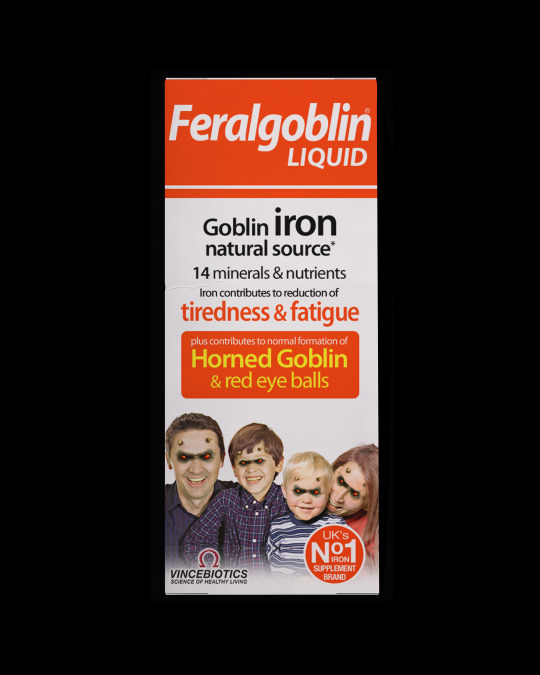

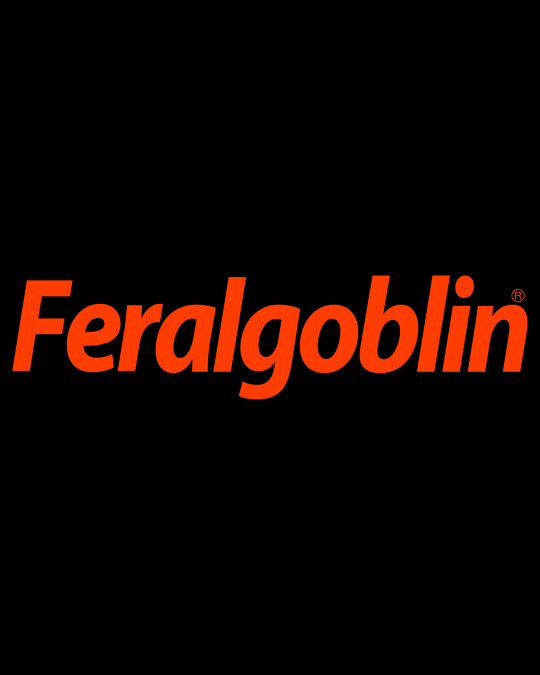
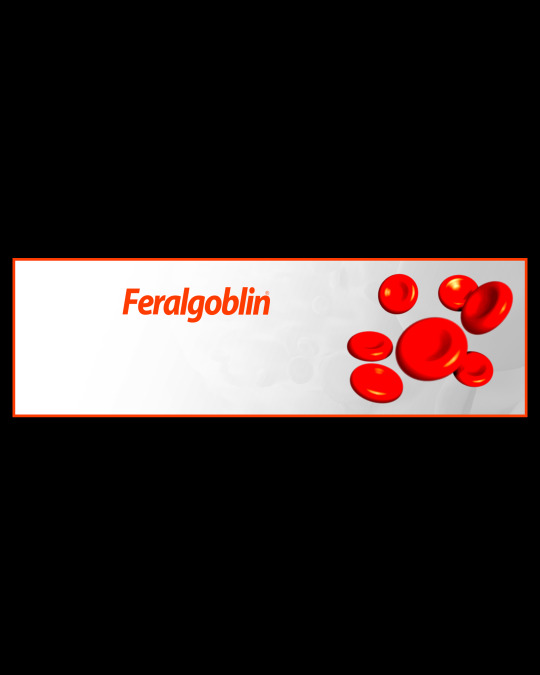
Consuming. Endless scroll. Depths of internet. Cursed. Dark web. Humour, the alleviator of all. Breaking awkwardness. Breaking tension. Breaking. Breaking. Down. Downers. Uppers. T-Total. What is the supplement to your life?
𝙁𝙚𝙧𝙖𝙡𝙜𝙤𝙗𝙡𝙞𝙣
[DIGITAL ARTWORK, 2023]
‘Existing product imagery, digital manipulated.’
IMAGE SOURCES: Dad & Child 1: Pixabay 557078 by White77. Mum & Child 2: Pixabay 286834 by White77.
TYPEFACES: ‘Myriad Pro’ (various Weights) by Robert Slimbach & Carol Twombly.
IMAGE DESCRIPTION: A portrait image depicting a box of iron supplements titled ‘Feralgoblin’ which has multiple lines of text detailing the supplements in a Black and Red Sans-serif font. Towards the bottom is an image of a caucasian family, that have had their eyes turned to Red and horns added. All on a Black background.
1 note
·
View note
Text
Project 4: Progress and Text


Project 4: 27th Letter
This project we are advertising the 27th letter to the alphabet using 2 fonts. One typeface using serifs and the other using sans. I used Modern No. 20 for my serif letter and Myriad Pro for my sans. This project had a lot to do with organizing and re-organizing. I personally consider this my favorite so far because of how fun and creative we have (also the longest project we could tweak around with). With this new project I've played around with the letters by rotating, combining specific areas and erasing some. The picture on the right is the image of my current letter. It contains a mixture of J, Q and S. Although its not clean, I liked the organic shapes. I'll take it back into the workshop and keep playing around with it.
Ch 5: Text
Text is powerful not only for reading but visually too. This chapter proves that text is a major portion to good composition. One of the taboos that surprised me was the lack of taboos for vertical baselines. One of the biggest amateur mistakes I came across was, putting text on the side of the project and changing it to vertical. My professor also recommended us to essentially never use the vertical baseline for it always made things complicated to read. Hearing that there is no fixed rule, other than the case with lowercase letters, consider it an experimental gain.
0 notes
Text
Ideas On Tshirt Printing In B
Presenting the Revolutionary World of Tee Printing
Enter the lively realm of custom clothing and unlock a world of limitless opportunities. Picture you are on your own at a lively event, outfitted in a distinctive Tee that showcases your one-of-a-kind style. Really feel the power as you join the crowd at a song along celebration, donning a hoodie that sets you aside from the the others. Welcome the exhilaration of a fun run, showing off a singlet that radiates confidence and determination. This is the power of personalized style.
Selecting The Best Brands To print On
youtube
In the dynamic city of Brisbane, Queensland, style fanatics are welcoming the art of T-shirt decorating like never ever in the past. With brand names like AS Colour and Gildan leading the way, the choices are limitless. From classic screen printing to sophisticated digital printing methods, the world of custom clothing is regularly progressing. Consumers can make use of decorate their very own images, graphics or quotes onto 100% cotton clothing from well known brand names. Let us's study the tale of Emma, a young specialist who found the magic of T-shirt decorating. Emma, a fashion-forward person with a fondness for creative thinking, was looking for a method to share her one-of-a-kind individuality. She stumbled upon a local T-shirt printing business and quickly recognized she had discovered her inner voice.
Picking Contrasting Colors


Emma's trip started with a straightforward white unisex T-shirt from AS Colour. She choose the Maple Tee in a medium size to fit her slim body shape. With the help of the talented printing customer support staff, she changed it right into a masterpiece with an photo on the front and a quote on the back in a typeface she had picked for the event. She picked a bright pink to stand apart on the white Tee. The lively colors and elaborate style showcased her uniqueness and ended up being a discussion starter any place she went. Emma soon understood that her custom-printed Tee shirts were not simply pieces of apparel, but expansions of her identity. As Emma's collection expanded, so did her confidence. She wore her custom-printed hoodies to office events, easily mixing style and professionalism and trust. The attention to detail and remarkable craftsmanship of her personalized clothing made her stand apart among her coworkers. Emma ended up being a pacesetter, motivating others to accept their very own one-of-a-kind style declarations. However Emma's trip really did not stop there. She took her love for custom printed Tee shirts to new heights by participating in fun runs and songs events. Her custom-printed singlets ended up being a icon of her determination and interest. As she went across the goal, the crowd supported, astounded by her strong style choices. The globe of T-shirt printing is a play area for self-expression and creative thinking. It allows people like Emma to break devoid of the restrictions of traditional style and accept their true selves. Whether you're participating in a event, running a race, or dance at a songs celebration, custom-printed clothing is the crucial to making a declaration.
Summary
So, what are you waiting on? Enter the globe of T-shirt publishing and open your true possibility. Welcome the power of personalized style and let your creative thinking skyrocket. With brand names like AS Colour and Gildan at your fingertips, and a myriad of printing methods to choose from, the opportunities are limitless. It's time to make your mark and end up being a style symbol in your very own right.
Please read our other tutorials by clicking one of the hyperlinks below https://ideasontshirtprintinginbrisba79.blogspot.com/2023/09/ideas-on-tshirt-printing-in-brisbane.html Screen Printing Shop Screen Printing Shop Brisbane TShirt Printing Brisbane Screen Printing Shop Tee Shirt printing For Women Brisbane T Shirt Printing https://ideasontshirtprintinginbrisba404.blogspot.com/ https://ideasontshirtprintinginbrisba404.blogspot.com/2023/09/ideas-on-t-shirt-printing-in-brisbane.html https://www.tumblr.com/cooltshirttips/729562743306338304 https://2023livpurereview681.blogspot.com/ https://2023livpurereview681.blogspot.com/2023/09/2023liv-pure-review.html
0 notes